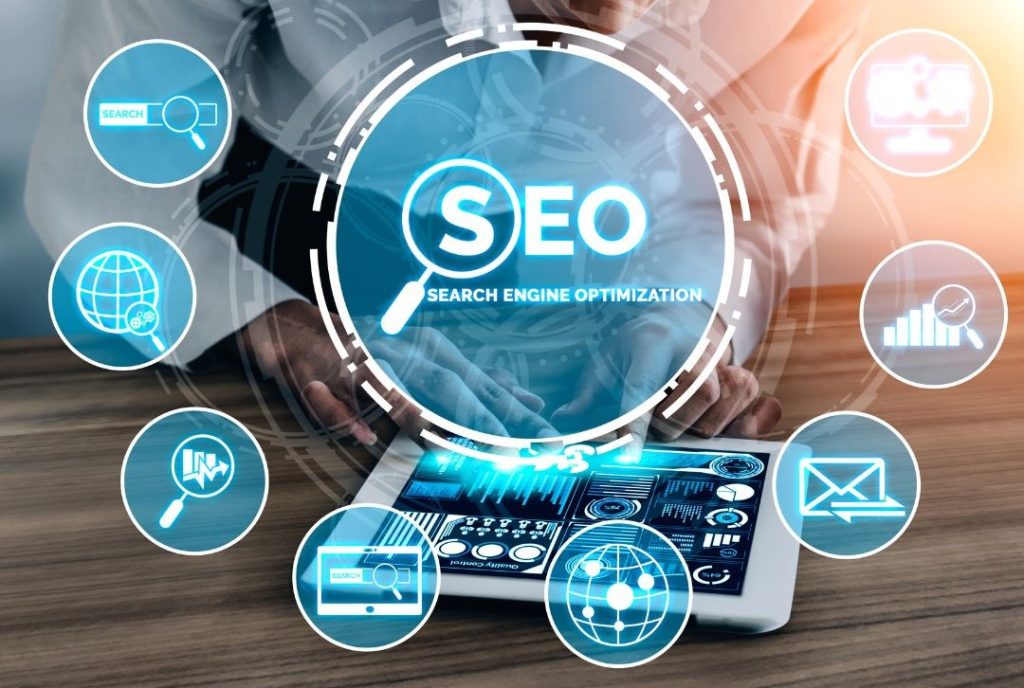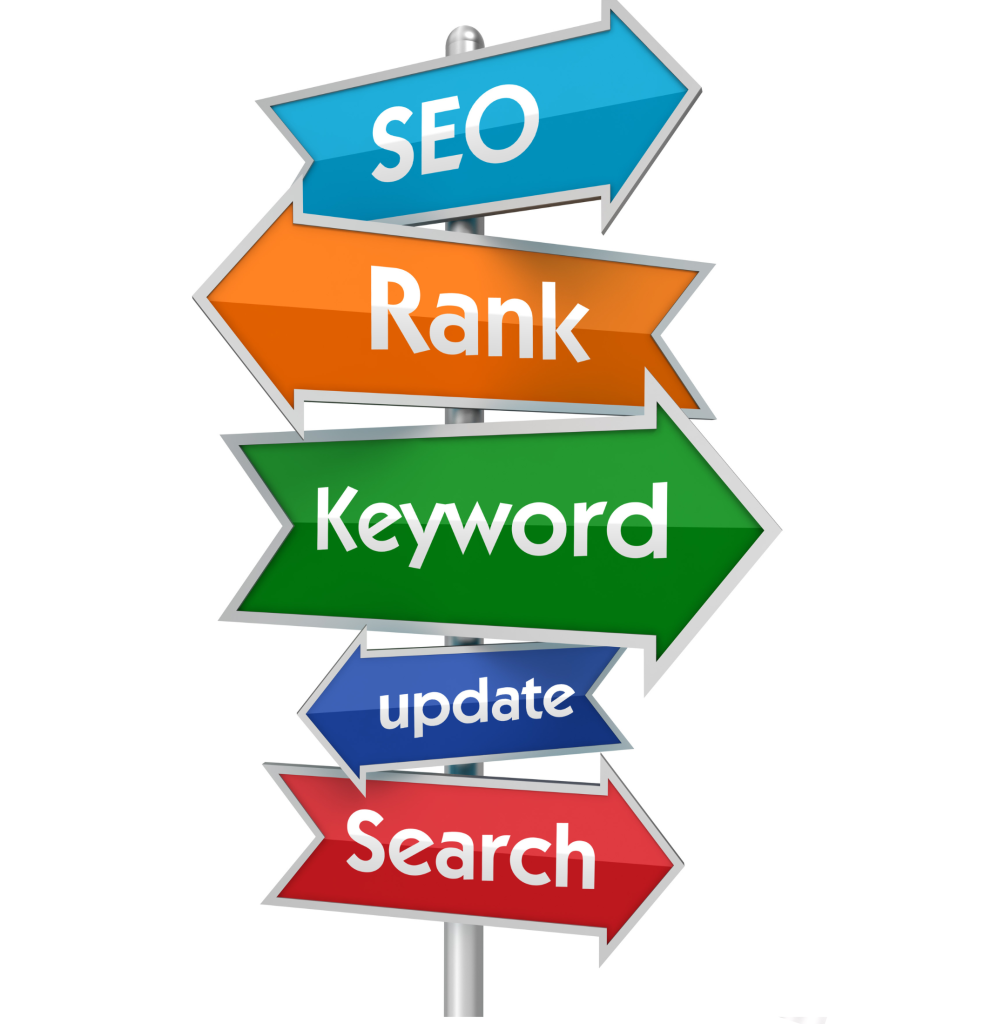
Search Engine Optimization
We Make Perfect Solution in Business
SEO (Search Engine Optimization) is the process of enhancing a website's visibility in search engine results pages (SERPs) for relevant queries. The main goal is to boost organic (non-paid) traffic by optimizing the website to rank higher on search engines like Google, Bing, or Yahoo.
SEO encompasses both on-page and off-page strategies, alongside technical approaches, to ensure the website is optimized for both users and search engines.
SEO includes optimizing various components of a website, such as content, structure, technical elements, and link-building tactics, to help search engines crawl, index, and rank your site effectively.


Why is SEO Important?
⦁ Increased Organic Traffic: A well-optimized website ranks higher in search results, bringing in more organic traffic without the need for paid ads.
⦁ Enhanced User Experience: SEO improves various elements of a website, such as navigation, structure, and content, making it more user-friendly and engaging.
⦁ Cost-Effective Marketing: While SEO requires time and effort, it's typically more affordable than paid advertising like PPC, with long-lasting results that continue to drive traffic over time.
⦁Building Trust and Credibility: Websites that rank higher in search results are often seen as more trustworthy and credible by users, boosting their confidence in your brand.
Services We Serve to You

On-Page SEO
On-page SEO focuses on optimizing various elements of a website or web page to improve its search engine rankings and user experience. This includes enhancing content, HTML code, structure, and multimedia to make them more search engine-friendly while also improving the overall usability for visitors. The goal is to make sure the page is both relevant and easily accessible to both search engines and users.
On-page SEO is essential because search engines rely on these factors to assess how well a page aligns with a search query. Effective optimization increases the chances of your page ranking for relevant keywords and providing a smooth, engaging experience for users.
Key Elements of On-Page SEO
On-page SEO increases your chances of ranking higher on search engine results pages (SERPs) for relevant keywords.
⦁ Keyword Research: Finding valuable keywords that are relevant to your business and resonate with your target audience’s needs.
⦁ Content Optimization: Crafting high-quality, keyword-optimized content that offers value to users and effectively addresses their questions.
⦁ Internal Linking: Incorporating internal links within your content to enhance navigation and guide visitors to other important pages on your site.
⦁ Image Optimization: Reducing image file sizes and using clear, descriptive alt texts to help search engines better understand your images.
⦁ Meta Tags: Optimizing meta titles, descriptions, and headers to ensure they are clear, concise, and aligned with the interests of your audience.

Off-Page SEO
Off-Page SEO refers to the actions taken outside of your own website that influence your site's search engine rankings. While on-page SEO focuses on optimizing content and elements within your website, off-page SEO is about enhancing your site’s reputation, authority, and credibility on the web. The main goal of off-page SEO is to signal to search engines that your website is trustworthy, valuable, and relevant to the audience.
Off-page SEO primarily involves link building, but it also includes other tactics like social media engagement, brand mentions, and online reputation management.
Off-page SEO refers to the optimization of factors outside of a website to improve its ranking in SERPs. It involves building backlinks, promoting the website on social media, and engaging in other activities to increase the authority and popularity of the website.
Key Elements of Of-Page SEO
Off-page SEO refers to actions taken outside your website to improve its rankings.
⦁ Backlink Building: Acquiring backlinks from authoritative websites is a primary ranking factor. Quality backlinks signal to search engines that your website is credible and relevant.
⦁ Social Media: Leveraging social platforms to engage with your audience and drive traffic back to your website.
⦁ Brand mentions are instances where your business or website is mentioned on another website, even if no link is included. Search engines like Google consider brand mentions as a signal of authority and relevance.
⦁ Guest Blogging & Influencer Marketing: Building relationships and getting backlinks through guest posts or collaborations with influencers.

Technical SEO
Technical SEO optimizes a website's technical aspects to improve search engine rankings. It focuses on making it easy for search engines to crawl, index, and render content. Unlike on-page SEO, which deals with visible elements, technical SEO addresses the backend structure, improving search engine access and understanding.
Effective technical SEO enhances website performance, visibility, user experience, and search engine rankings.
Technical SEO is crucial for optimizing the website's underlying technical elements, including structure and code, for better accessibility for search engines and users.
Technical SEO improves the backend architecture, enabling search engines to efficiently crawl, index, and rank content. Key areas include site speed, mobile optimization, and structured data.
Key Elements of Technical SEO
Technical SEO focuses on improving the technical aspects of a website to ensure it's search engine-friendly
⦁ Mobile Optimization: Make sure your website is responsive and delivers a seamless experience on mobile devices.
⦁ Site Speed: Improve loading times because faster websites rank higher and offer a better user experience.
⦁ URL Structure: Keep URLs short, clean, and keyword-rich to help search engines understand the content of your pages.
⦁ Crawlability & Indexability: Ensure that search engines can crawl and index all the important pages on your site for better visibility.
⦁ HTTPS Encryption: Use HTTPS with an SSL certificate to secure your site, as Google considers it a ranking factor.
⦁ XML Sitemap: An XML sitemap helps search engines understand your website structure and easily discover new content.
⦁ Fixing Broken Links: Regularly check for and fix any broken links or 404 errors, as they can negatively impact SEO and user experience.
Tools for SEO
⦁ Google Analytics: Tracks website traffic, user behavior, conversions, and key metrics to help you understand and improve your website's performance.
⦁ Google Search Console: Offers valuable insights into how Google perceives your website, including crawl errors, indexing issues, and search performance data.
⦁ Ahrefs / SEMrush / Moz: All-in-one SEO tools that assist with keyword research, backlink analysis, and competitor insights to enhance your SEO strategy.
⦁ Yoast SEO (for WordPress): A plugin for WordPress that helps optimize on-page elements such as titles, meta descriptions, and content to improve SEO.
⦁ Screaming Frog SEO Spider: A website crawler that helps identify issues like broken links, duplicate content, and missing metadata to improve site health and SEO.

Benefits of SEO (Search Engine Optimization)
1) Increased Organic Traffic
⦁ Long-Term Results: SEO helps you rank higher in search engine results pages (SERPs), leading to a consistent and reliable flow of organic traffic over time. Unlike paid ads, SEO can provide lasting results without ongoing costs.
⦁ Targeted Traffic: By optimizing for specific keywords and user intent, SEO helps attract users who are actively searching for the products, services, or information you provide, increasing the likelihood of conversions.
2) Cost-Effective Marketing
⦁ No Direct Costs: Unlike paid advertising (e.g., PPC), SEO focuses on improving organic rankings, which means there are no costs per click. While SEO requires investment in time and resources, it is more cost-effective than other forms of online advertising..
⦁ Higher ROI: SEO can deliver a high return on investment (ROI) by attracting a consistent flow of free traffic from search engines, particularly when compared to paid advertising campaigns that require ongoing funding.
3) Improved User Experience (UX)
⦁ Better Navigation: SEO encourages creating a website that is easy to navigate, improving the user experience. Clear structure, fast loading times, mobile responsiveness, and intuitive design all contribute to better UX.
⦁ Mobile Optimization: SEO includes optimizing for mobile, ensuring that your website performs well across devices, which is critical as more users search and browse on mobile.
4) Higher Conversion Rates
⦁ Targeting Intent: SEO helps optimize content around search queries with high user intent. For example, people searching for "buy running shoes online" are ready to make a purchase, meaning that SEO-driven traffic can lead to higher conversion rates.
⦁ Trust and Credibility: Websites that rank well in search engines are often perceived as more credible and trustworthy by users. Being at the top of search results can help establish authority in your industry.
5) Builds Brand Awareness
⦁ Increased Visibility: Ranking higher in search results increases your brand's visibility, making it more likely that users will become familiar with your brand even if they don't immediately click through to your site.
⦁ Top-of-Mind Awareness: A website that appears consistently on the first page of search results will naturally be associated with relevant topics, boosting overall brand recognition.
6) Increased Click-Through Rate (CTR)
⦁ Appealing Meta Descriptions: Optimized meta titles and descriptions can help improve your click-through rate (CTR) by making your listing more attractive in search results.
⦁ Featured Snippets and Rich Results: With structured data and content optimization, your website may appear in special search features like featured snippets, knowledge panels, and rich results, driving even more visibility and clicks.
7) Better Understanding of Your Audience
⦁ Analytics and Insights: SEO tools like Google Analytics and Google Search Console provide detailed insights into user behavior, search queries, and which pages are performing the best. This allows businesses to understand what their audience is looking for and optimize their content and strategy accordingly..
⦁ Keyword Research: By understanding the keywords your audience is using, you can create more relevant content that resonates with potential customers and addresses their needs.
8) Improved Local SEO
⦁ Local Listings and Reviews: Local SEO can help small and local businesses get discovered by users searching for nearby services. By optimizing for local searches and having your business listed in directories like Google My Business, you can drive more foot traffic to your physical store.
⦁ Targeting Local Audiences: Local SEO focuses on geographic location-based keywords, making it easier to attract customers who are actively searching for services in your area.
9) Increased Social Media Visibility
⦁ Content Sharing: High-ranking content tends to get shared more on social media, which increases exposure and drives more organic traffic. Social media signals, while not direct ranking factors, can amplify your SEO efforts by promoting your content.
⦁ Brand Exposure: As your SEO improves and your site gains more visibility in search results, your brand’s content can become more discoverable on social platforms, increasing overall brand presence.
10) Enhances Website Usability
⦁ Improved Site Structure: SEO encourages a well-organized site structure, with easy-to-follow navigation and clear paths for users to find the information they need. A good website structure benefits both search engines and users, improving the overall experience and engagement..
⦁ Faster Load Times: SEO efforts often include optimizing your website's speed, which is not only important for search engine rankings but also for user experience. A faster website leads to lower bounce rates and higher user retention.
